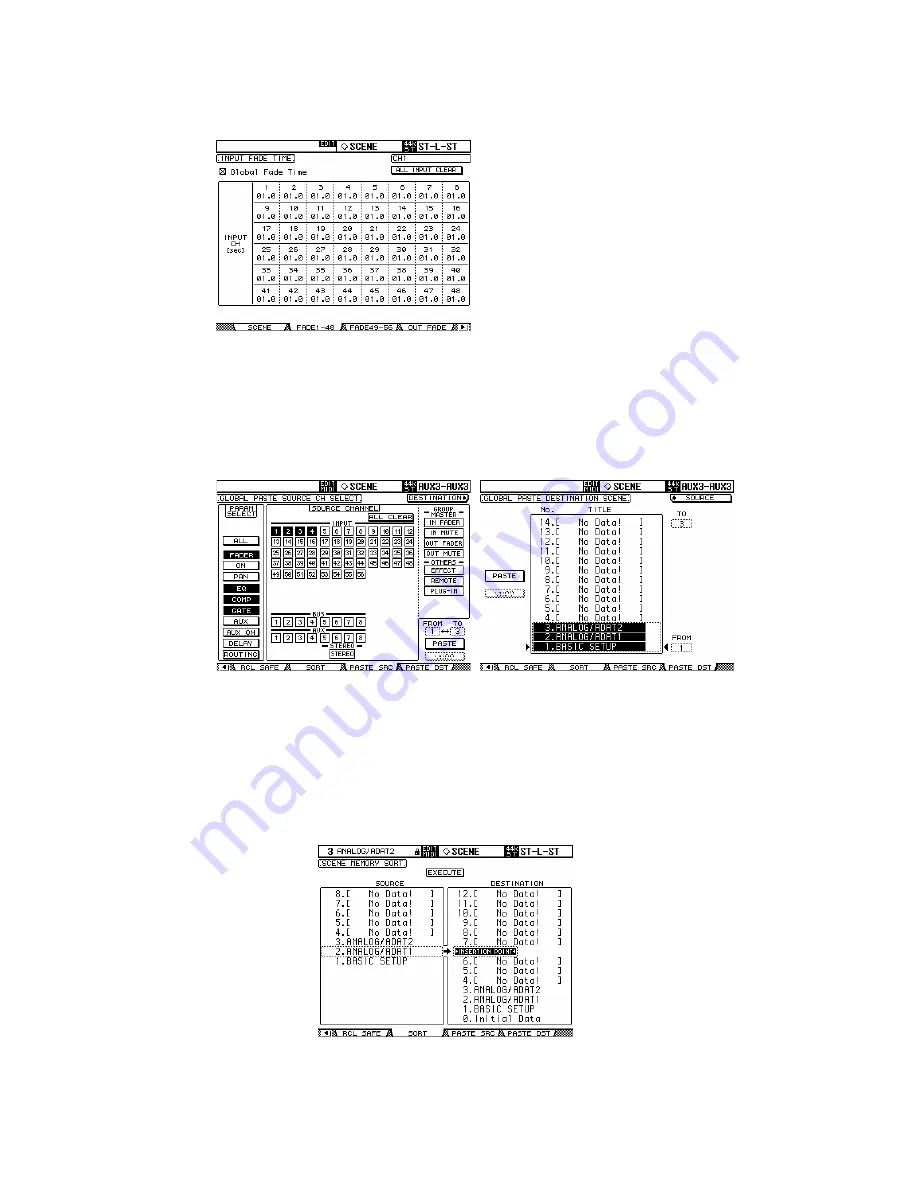
SCENE FADE
Normally when a Scene is recalled, the
Faders move instantly to their stored
position. Using the Fade Time function,
the faders can be programmed to move
slowly, taking up to 30 seconds to
complete their movement. Checking the
Global Fade Time box will give the same
Fade Time to every Scene. After setting
the Fade Time for one channel, double-
click the ENTER switch to copy the time to
all Input or Output Channels.
SCENE COPY / PASTE
If some settings need to be copied from one Scene to some others, the
PATSE SRC and PASTE DST LCD screens can be used.
In the PASTE SRC screen, choose which parameters of which
channels should be copied.
In the PASTE DST screen, choose which Scene Memories should be
updated. The maximum number is 10 Scenes for each operation.
To move a Scene to a different position in the Library, use the SORT
screen in the SCENE MEMORY menu:
18
02R96-v2 Quick Start Guide




















